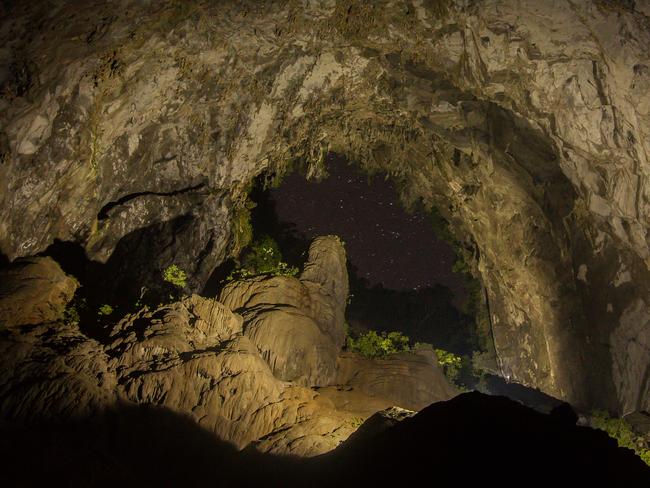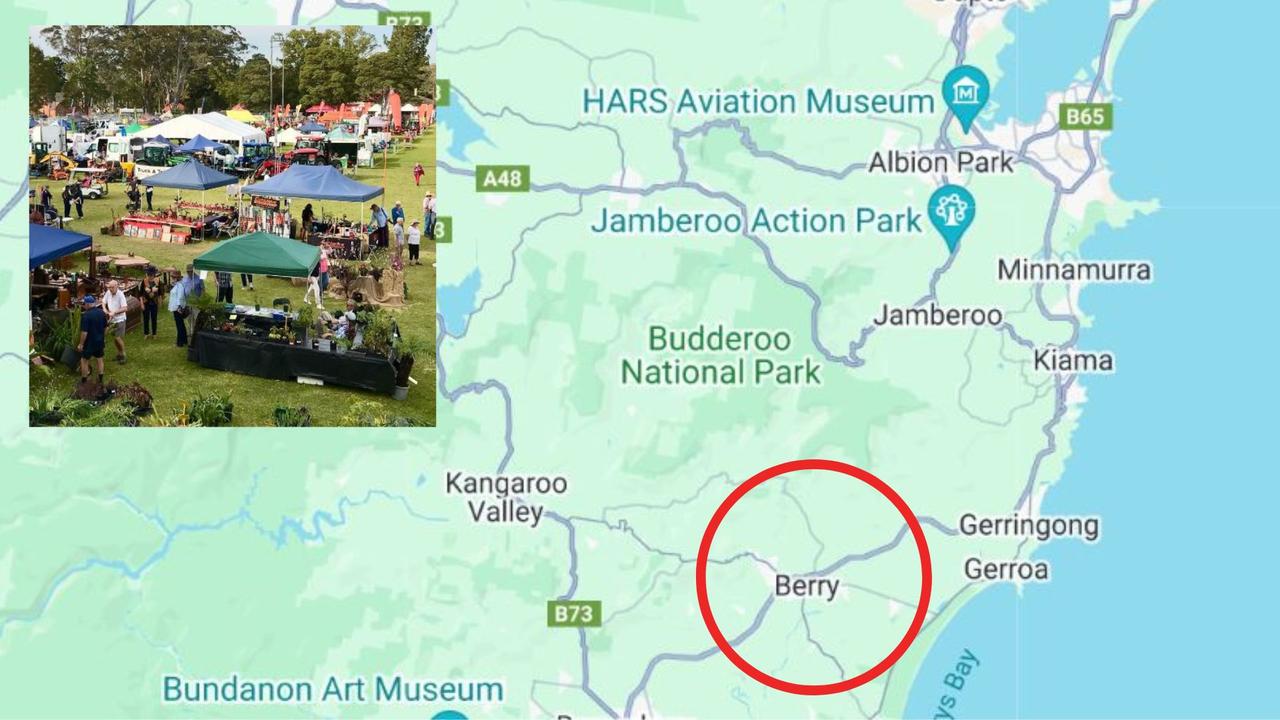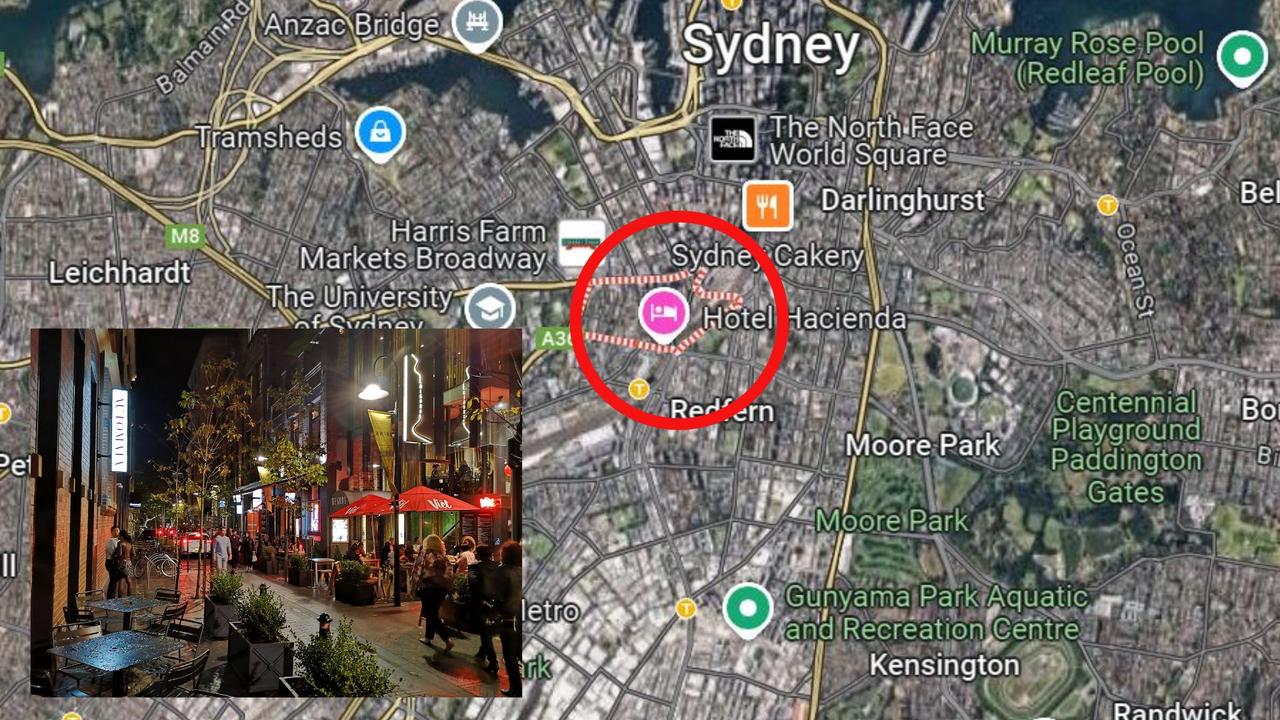Rare sight in world’s biggest cave
DEEP in the jungle lies the most spectacular cave system ever found. Remote and dangerously inaccessible, there’s a towering jungle, tigers and more.
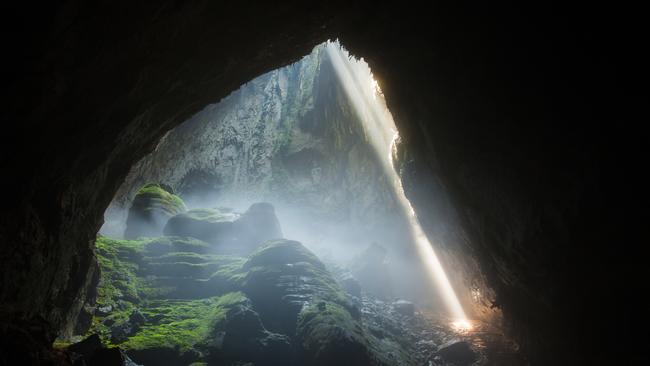
“WHATEVER you don’t do, don’t fall to the right.”
Those were the last words caving expert Howard Limbert said to me before he disappeared into the cavern’s dark abyss. I repeated his warning in my head as I scrambled along the serrated ridge that would take me inside the largest cave in the world, Hang Son Doong.
Jagged boulders of limestone scatter below me, stretching for 80 metres to the bottom of the entrance. My mind generated horrifying images of the damage that would be caused if I slipped and landed on their treacherous, sawtooth edges. I took a deep breath, leaned hard to the left, and stepped into the unknown.
The Phong Nha-Ke Bang National Park in Central Vietnam is home to the planet’s second largest karst landscape, and hides one of the most spectacular cave systems ever found. Remote and dangerously inaccessible, endangered tigers still roam the wild terrain and the majority of the UNESCO World Heritage site has never encountered human footsteps.
Thousand of tonnes of unexploded ordnance scatter the earth, leftover from the tragic days of the American/Vietnam War. This is where I would call home for five days.
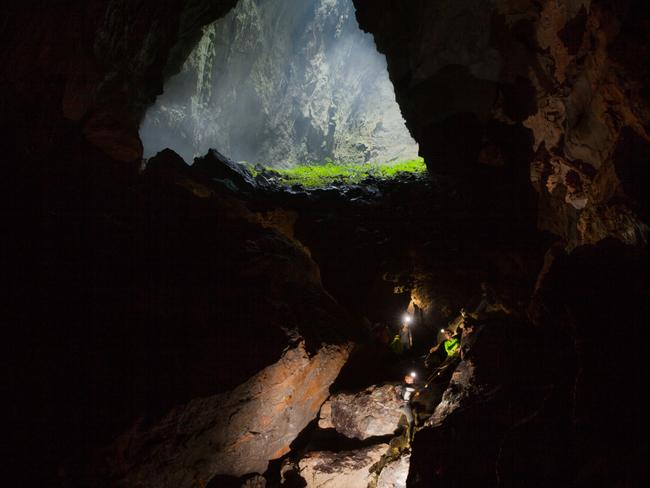
The relaxed village of Phong Nha straddles the 857 square kilometre national park near the border of Laos. Five years ago, this sleepy town only received handful of foreign tourists each month.
Today it is becoming Southeast Asia’s fastest growing adventure destination, thanks in large part to the discovery of Hang Son Doong, the largest cave in the world.
Like many travellers who pass through the area, I had fallen in love with the rural ‘wild west’ feel of Phong Nha and decided to call the village home for three months. With Hang Son Doong beckoning from my backyard, resisting the urge to explore it was impossible.
On a rain-soaked morning, nine other adventurers and I set off from Phong Nha and down the historic Ho Chi Minh Highway. From the start of the unmarked trail, our team of 20 porters, two caving experts, a local guide, his two assistants, and two national park rangers wandered into the daunting jungles of the national park.
“When we first started exploring this area, it would take us two whole days trekking from town to reach this trail. Now we can get here in an hour,” Howard tells me as we wade through a knee-deep creek on the way to Ban Doong, the only indigenous village located inside the national park. Howard and his wife Deb were the first caving experts to begin surveying the limestone systems in Central Vietnam back in the late 80s.

“We were the first white faces many of these people had ever seen.”
Local man Ho Khanh first discovered Hang Son Doong, which translates as ‘Mountain River Cave’, in 1990 when he was seeking shelter from a storm. After that day though he forgot its exact location, and it remained lost until he stumbled across it again in 2008.
When Howard, Deb and a team of British cavers started examining the area in 2009-2010, they determined it was the largest cave ever found.
In 2012 the sustainable adventure tour company, Oxalis, began running pilot tours to Hang Son Doong, and now hold the only licence to take a strictly limited number of tourists a year inside its chambers. I was about to become one of the lucky few.
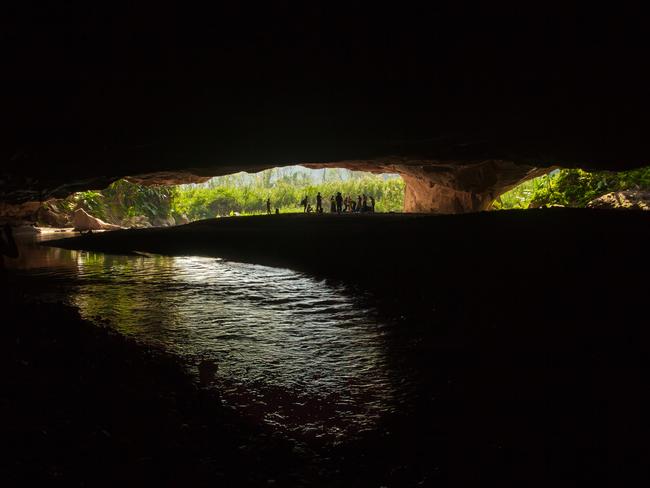
After six hours of trekking through pristine jungle canopies and meandering creeks we first caught a glimpse of an unimaginable sight — the entrance to Hang En, the third largest cave in the world.
The gaping open scar in the side of a soaring cliff loomed above us in an imposing fashion. We skirted to the side, where a 40 metre-wide slit allowed easier access into the goliath cavern.
Hang En, or ‘swift cave’, named after the birds that nest inside it, would be our home for the night. Its immaculate campsite — a sandy beach inside a cave with a glistening turquoise lagoon on one side and a flowing river on the other — may be one of the most beautiful encampments found anywhere in the world.
The ceiling stretches for hundreds of metres above you while the natural opening allows daylight to flood the interior. Only one other place on earth can compete with this, and we would arrive there the following day.

The next morning our experienced guide, Thanh, excitedly urged us to gather our belongings and we set off to the exit of Hang En. We clambered over towering rocks to reach a view that no images could ever do justice — a 150m tall archway that dwarfs everyone who stands beneath it. “There is more space in that exit than there is limestone above it,” Ruth, the second caving expert on our expedition, tells me. “It’s a miracle that it hasn’t collapsed already.”
Back in the outside world we hiked through a narrow gorge, completely engulfed by the prehistoric jungle. Millions of butterflies danced across the sky as we marched towards the steep ascent that would lead us to our ultimate destination. The earth was slick as ice from the previous day’s rain and we grasped at vines to stop us from falling into tangled shrubs. Exhausted and covered in leeches, we finally arrived at the mouth of Son Doong.
Clouds billowed from the surprisingly small entrance and we could hear a raging torrent of water echoing deep from inside the mountain. The intimidating atmosphere indicated that there was something colossal about what was in front of us. However we would not be allowed access without a challenge.
“We have to crawl through that small opening to get inside the world’s biggest cave,” Howard mused, while dropping onto his stomach. I never thought I would feel claustrophobic on this journey, but as I commando crawled through a hole the size of a car wheel, I began to realise that everything I had expected about this adventure would be questioned.
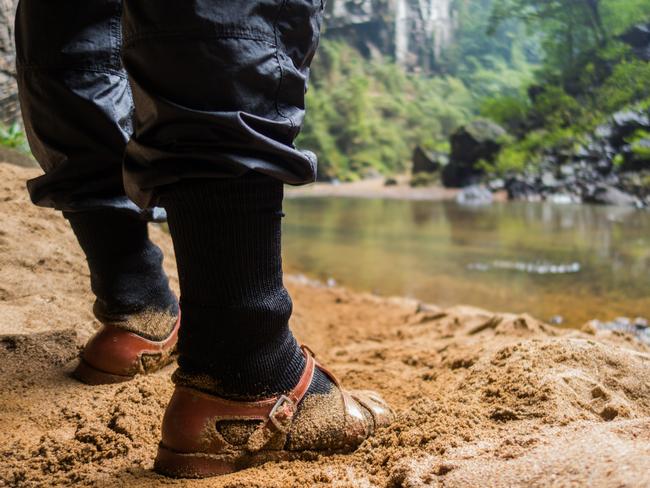
From the entrance it is a staggering 80 metres to the bottom of Son Doong, down some steep and treacherous terrain. We donned harnesses and descended through the rock fall, secured with climbing ropes and anchors. With our entire group safely gathered, we continued into the darkness.
Approaching the thunderous Rao Thuong River, we paused so we could appreciate the power of this turquoise waterway. It is this underground river that has carved out the chambers of Hang Son Doong and Hang En over two million years. Using a guideline for support, we gingerly crossed the Rao Thuong, knowing that one wrong step here would prove to be lethal.
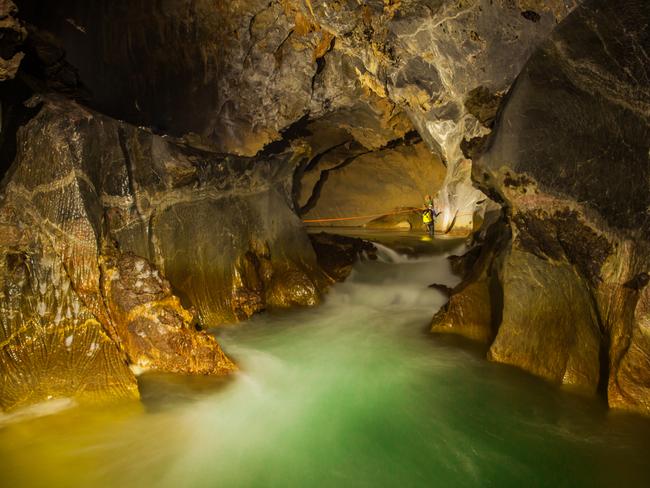
Hours flew by as we cautiously moved deeper into the cavern, with only the powerful beams of our headlamps illuminating the way. Summating a peak, we began to see silhouettes of giant formations ahead, lit up from a distant light over a kilometre away.
Rising high above us was the ‘Hand of Dog’, the 80m tall stalagmite that is the largest in the world. Everything about Son Doong is immense.
With our energy levels dwindling we approached our campsite, which had already been prepared by our porters. Ahead was a doline; a collapsed part of the ceiling that now exposed the interior to the outside world. The chefs were hard at work, preparing the night’s meal of barbecued pork ribs, marinated chicken and sauteed vegetables. Even hundreds of metres underground, two days walk from civilisation, the locals know how to eat right.

“Good chance of sunbeams this morning.”
My eyes lit up at Howard’s hopeful comment. Son Doong’s sunbeams are rare and elusive, and witnessing one would be a huge stroke of good fortune. Our team scoffed breakfast and departed our camp towards Doline 1. Blue skies greeted us, a sight you would not expect when trekking beneath the Earth. The barren, rocky ground transformed into a shimmering carpet of lime-green moss as we crossed the exposed section humorously known as ‘Watch Out For Dinosaurs’.
The first rays from the rising sun hit the cliff beside us, penetrating into the cave. Over the next hour we watched in awe as the beam of light crept its way across the floor and into the heart of the cavern. These are only visible inside Son Doong at certain times of the year, and to have clean skies at the right part of the day is a gamble.
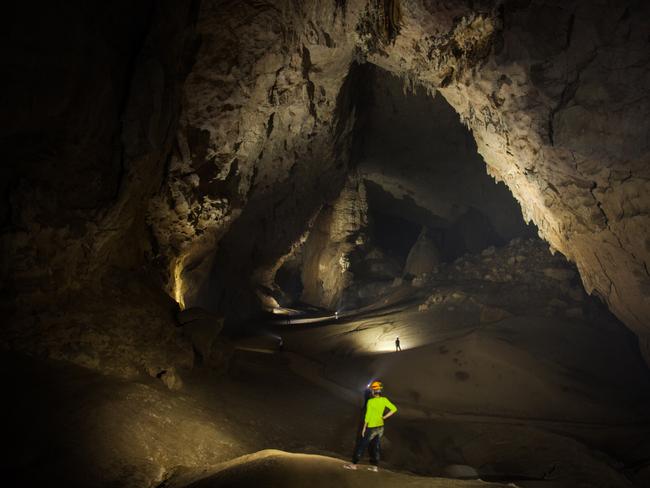
We continued on towards Doline 2. Our legs were burning from the previous day’s mission, and the terrain would not prove to be any easier.
We approached the Garden of Edam, which is perhaps Son Doong’s most peculiar landscape. At the base of the second doline, a sprawling jungle grows irrepressibly. Trees as tall as buildings reach for the sky; langurs swing from their branches and birds nest between their broad leaves. For a fleeting moment it was easy to forget that we were still inside the cave.
Thanh enthusiastically guided us to camp 2 at the bottom of the cave’s dense jungle, excited to take us to the next stage of the expedition. Taking only a short break to rest and rehydrate, we marched on towards the end of Son Doong’s massive chambers. Stalagmites and stalactites emerged all around us, continuously growing from the calcite-rich water dripping furiously through the cracks in the limestone.

We were on our way to the Great Wall of Vietnam — the 60 metre high barrier that had halted cavers in their tracks during the first exploration of Son Doong in 2009. For almost a kilometre we waded and swam through a thin interior lake, steep walls coated in sludge surrounding us on both sides. The texture was like molten chocolate, and it did not take long for an impromptu mud-slinging fight to break out.
Spirits were high as we wove and dodged the airborne missiles before finding ourselves at the base of the wall. From the top of this blockade it is only a few hundred more metres to the exit of Son Doong. We had now roamed five kilometres underground and could push on no more. Our end had been reached. Elated, we turned around and made our back to the campsite.
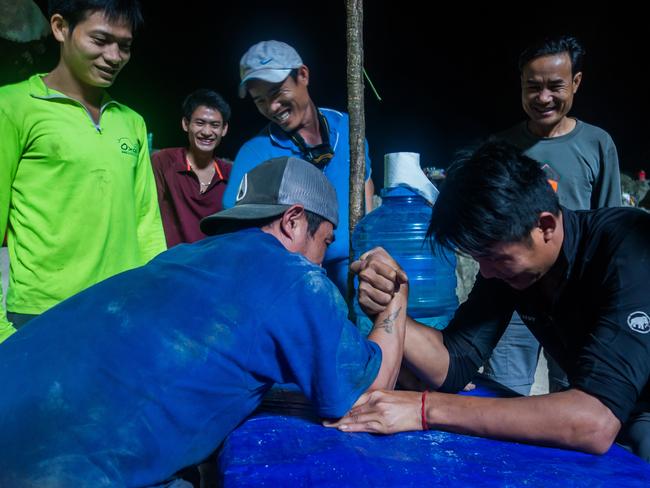
After dinner I found myself perched on a rock, staring out into the night sky through Doline 2. Stars shot across the scene in glimmering flashes of fluorescent light. The others joined me.
“This is our favourite camp in Son Doong,” Thanh said contemplatively. “All the porters are jungle men. They like being in the jungle, but they also like the cave. Here they can have all — the stars, cave and jungle — and feel at home.”
I too felt at home.
Retracing our steps through Son Doong was an emotional event. We knew that this once-in-a-lifetime opportunity would undoubtedly be the last time we would ever be inside the Mountain River Cave’s chambers. The Garden of Edam would continue to grow and Watch Out For Dinosaurs would experience more sunbeams. The Rao Thuong River will forever carve away at the limestone, long after humans have moved on from this earth.
Climbing the 80 metres out of the cavern and traversing along the gorge back to Hang En happened all too fast. We moved in hypnotic steps, only the thoughts of hot showers and cold beer back in Phong Nha motivated us to continue on. We wandered back into Hang En’s campsite, setup on that lakeside beach beneath a towering chamber. One more night spent underground would be our final experience in one of the most wondrous natural places ever discovered.
Our group of 10 explorers, twenty porters, two experts, three guides and two park rangers sat on a tarp and watched as the sky turned from day to night. The stars came out again, as did the rice wine. Although the journey was coming to an end, our final night was just beginning. With no-one to disturb but the swifts above us, the party continued late into the night.
